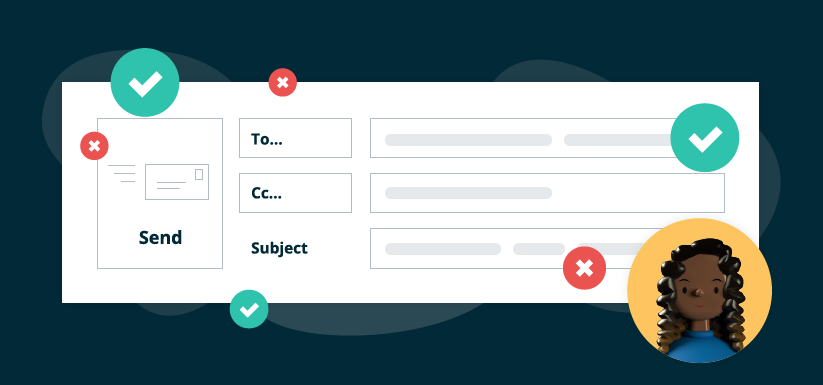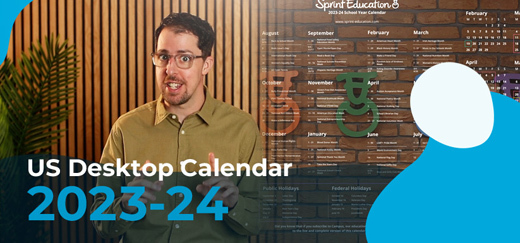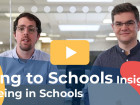Why Email Marketing Wears the Crown in 2023
Why Email Marketing Wears the Crown in 2023
Learn why email marketing is the number-one method of generating leads and making more sales with schools (including the must-know statistics for 2023).
Learn why email marketing is the number-one method of generating leads and making more sales with schools (including the must-know statistics for 2023).
As yet another year rattles by at speed, bringing with it all of the exciting, new developments in the digital world, you’d be forgiven for thinking education marketing had moved onto bigger and better things. After all, email marketing’s been around since 1978 – before many of today’s teachers were even born – and since then we’ve seen some truly world-shaping developments in communication.
But it’s difficult to reach your target teacher audience with out-of-home advertising, and (as we’ll cover further down), reaching teachers on social media is, perhaps surprisingly, rather ineffective.
To best communicate with schools, you need to stick to this trusty, tried and tested method…
In this year’s edition of our ground-breaking education report, The State of Selling to Schools 2023, we asked schools:
“Which method of receiving communications and offers from education businesses are you most likely to reply/react to?
For the third year running, the result was overwhelming.
A huge 87.6% of respondents are most likely to reply to an email!
As we know, email communication is an effective but unobtrusive way to engage with teachers. We only ever email teachers’ work email accounts about products and services that will benefit their school.
The benefit of emailing work-only addresses is that teachers actively need to log into their work account. They will be expecting emails related to their job, and they will in all likelihood be in the right frame of mind to engage with this kind of content.
Emails are also quick to delete, and all emails sent by Sprint Education are simple to unsubscribe from – it just takes two clicks for a teacher to remove themselves from all our future communications, something that gives them a sense of control over the content they receive.
The option to quickly opt-out is not as simple for all the other communication methods listed, particularly social media.
While social media campaigns can be highly effective in other sectors, it’s clearly the least-favoured method of communication for teachers, with communication via Twitter, Facebook, and LinkedIn receiving less than 4% of combined survey responses.
Social media is mostly used by people to connect with friends and family during their downtime.
Therefore, it’s less likely that teachers will be as keen to engage with marketing messages when not in ‘work mode’.
Physical publications and postal campaigns only received 5% of survey responses, making email marketing the key leader, although this was over double the results from 2022 (with 1.8% of votes).
The easing of COVID restrictions likely means the staffroom coffee table is once again filled with plenty of publications for staff to share around, and all staff are back in school to check their pigeon holes on a regular basis.
These results, for the third year running, back up our expert insights that email marketing is the key to unlocking success within the education sector!
Moving on, we also asked teachers and leaders…
“How often do you check these social/communication tools each day?”
To this, 46.8% of teachers surveyed said they check their work email more than ten times a day, a slight increase from 2022 (46%). Facebook is the second communication tool that teachers engage with most regularly, but it trails far behind email, with just 3% of teachers saying they check it more than ten times a day. Of course, there’s nothing to suggest they’re checking their social media feeds for work purposes, so these could all purely be for entertainment.
Applied across the entire UK sector, this equates to nearly 5,387,000 more inbox logins than Facebook views by UK teachers each day. That’s a staggering 1.97 billion more logins over the course of one a year!
A closer look at the numbers show that teachers check their inbox an average of 8.3 times per day, and view their Facebook feed 2.75 per day. These numbers are extremely close to our findings from 2022.
Teacher workload continues to be a hot topic, and one of the key reasons why teachers voted to take strike action in February and March 2023. Whatever solution is found in the short-term, the longer-term issue is not likely to disappear overnight. For teachers to have resources at their fingertips via email is all the more important considering the pressure that those working in schools are continually under.
Teachers will naturally be checking their inboxes as they correspond with colleagues or parents. However, if you can highlight how important your offer is concerning their day-to-day work, perhaps even topics they’re emailing their colleagues about as your email hits such as wellbeing or attendance, your email is bound to gain attention.
Sending postal campaigns to staff pigeon holes is still an effective method of communication, with 35% visiting their pigeon hole 1-3 times a day, and 59.9% less than once a day (some of which could simply be due to the fact not every teacher works full time). For many staff, it remains a daily habit, and one you should certainly take advantage of with your selling-to-school strategies.
For teaching staff, checking their pigeon holes once a day is not the same as scrolling their Twitter feed once a day. The power of something that can be held in the palm of your hand cannot be underestimated, particularly given the vast difference in quantity – and quality – between the two mediums.
If your pigeon hole campaign captures teachers’ imagination, they are likely to engage with it on a far deeper level, something that can be seen in the increase of likelihood for teachers to respond to an education publication advert.
Of course, aspects such as paper usage and costs will likely be a consideration for many businesses. While postal campaigns can be hugely successful, particularly when used in conjunction with an email strategy, they’re not always viable. Email campaigns, on the other hand, will ensure you reach the largest audience possible for the lowest cost, with often quicker turnaround times than postal processing.
What next?
Want to strengthen your school connections, accelerate the effectiveness of your email marketing campaigns, and learn more about combining postal and email campaigns to reign within the schools market?
Get in touch with us today on info@sprint-education.co.uk or 01684 297374, and start making the right connections.
Tags
Education Marketing
Email Marketing
Emailing Schools
Emailing Teachers
Email Teachers
Postal Marketing
Selling to Teachers
Social Media
Similar Articles


School Funding Made Simple
What You Need to Know to Make More Sales This Year!


Email Subject Line Dos and Don’ts – In Under a Minute
Become an edu-marketing expert with our quick guide to writing email subject lines that will make teachers want to read on.


Expert marketing to K-12 support and solutions
Expert marketing to K-12 solutions
Email Principals, Teachers, and District Staff Inboxes
Email teachers and staff inboxes
Sell More to US and Global Schools and Districts
Sell more to schools and districts
































